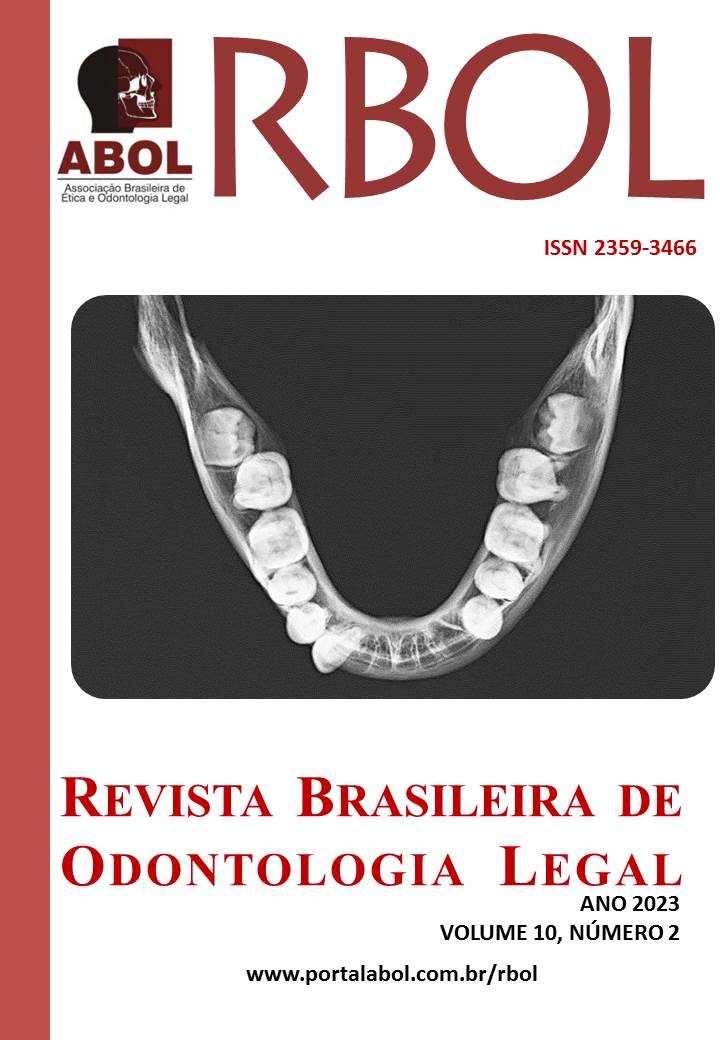ESTIMATIVA DE IDADE EM ESQUELETOS FETAIS: ANÁLISE DE QUATRO CASOS PERICIAIS
DOI:
https://doi.org/10.21117/rbol-v10n22023-486Keywords:
osteologia, antropologia forense, fetoAbstract
Forensic Anthropology is a field of biological anthropology that can be defined as the scientific study of human remains and/or bones, bodies or body parts that require identification. When immature bones are found, they may be mistaken for animal bones due to similarities in shape and size. In addition, fetal viability assessment is related to age estimation, and this data is also relevant in legal contexts, when issues such as abortion or infanticide are involved. The objective of this study was to describe the use of a traditional age estimation method (Fazekas and Kósa, 1978) in fetal skeletons and to verify its applicability in the local context, using samples from the Nucleus of Legal Medicine and Dentistry (NUMOL) in João Pessoa/PB. According to the method, six long bones (humerus, radius, ulna, femur, tibia, and fibula) from four available skeletons were measured. The smallest skeleton analyzed had its age estimated between 18 and 20 weeks, and the largest was 40 weeks. In the only cataloged skeleton in the collection, the age estimation was effective, encompassing the real age. In this context, the need to establish fetal age correctly in forensic cases is emphasized, which makes it possible to answer legal questions, especially regarding the viability of intrauterine life, shedding light on the possibilities of possible crimes of abortion or infanticide. Moreover, the study proved to be a guide in forensic work with the dissemination of the method, its execution, and application. However, it is necessary to develop new studies seeking the reliability of the method based on local and current skeletal remains.
Downloads
Published
Issue
Section
License
Os autores deverão encaminhar por email, devidamente assinada pelos autores ou pelo autor responsável pelo trabalho, a declaração de responsabilidade e transferência de direitos autorais para a RBOL, conforme modelo abaixo.
DECLARAÇÃO DE RESPONSABILIDADE E TRANSFERÊNCIA DE DIREITOS AUTORAIS
Eu (Nós), listar os nomes completos dos autores, transfiro(rimos) todos os direitos autorais do artigo intitulado: colocar o título à Revista Brasileira de Odontologia Legal - RBOL.
Declaro(amos) que o trabalho mencionado é original, não é resultante de plágio, que não foi publicado e não está sendo considerado para publicação em outra revista, quer seja no formato impresso ou no eletrônico.
Declaro(amos) que o presente trabalho não apresenta conflitos de interesse pessoais, empresariais ou governamentais que poderiam comprometer a obtenção e divulgação dos resultados bem como a discussão e conclusão do estudo.
Declaro(amos) que o presente trabalho foi totalmente custeado por seus autores. Em caso de financiamento, identificar qual a empresa, governo ou agência financiadora.
Local, data, mês e ano.
Nome e assinatura do autor responsável (ou de todos os autores).

